All Things Trees, Topic of FODM Walk
On the April 12, 2025, tree walk, led by Jim McGlone, an arborist and forester, FODMers and friends studied tree bark, buds, flowers, stems, limbs, leaves, structure, size and more – all things trees.
| The samaras of the red maple (Acer rhubrum) shimmered overhead. Samaras are seeds with wing-like structures that many youngsters call “helicopters” because of the way they flutter down to the ground. All photos by Glenda Booth |
 |
| Studying the stem of this box elder (Acer negundo), McGlone could determine that this branch had grown 1.5 feet this year. |
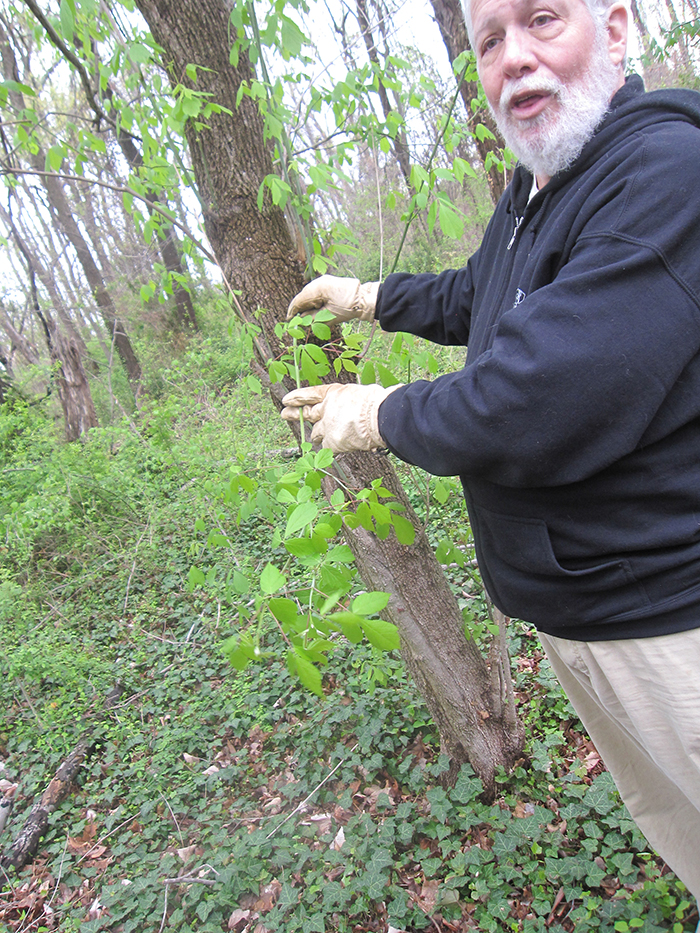 |
 |
| The sweet gum tree (Liquidambar styraciflua) has grayish brown furrowed bark. |
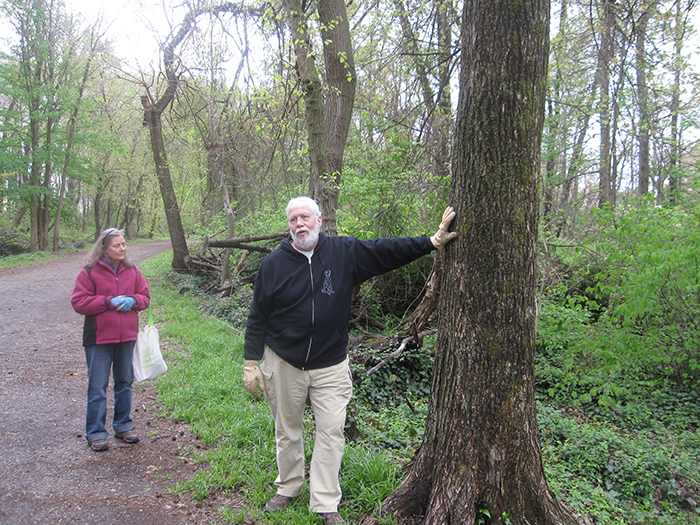 |
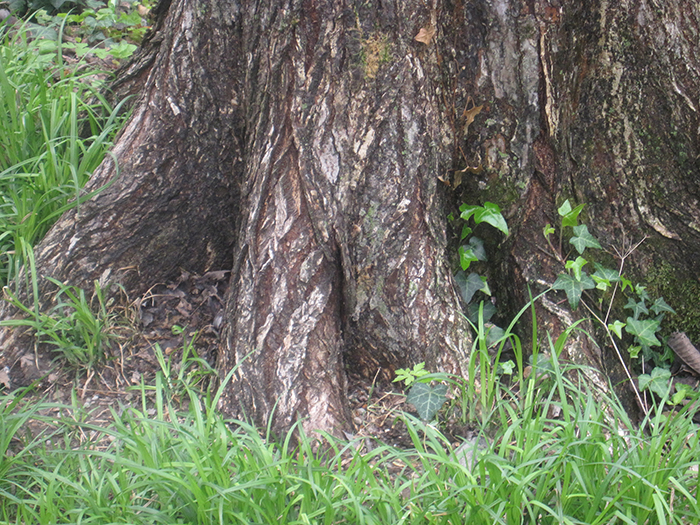 |
| The tree’s spiky brown fruit, popularly known as gum balls, lined the ground. |
 |
| The buckeye (Aesculus glabra), native to Ohio, “looks tropical,” McGlone commented, and has compound leaves and showy flowers in the spring. |
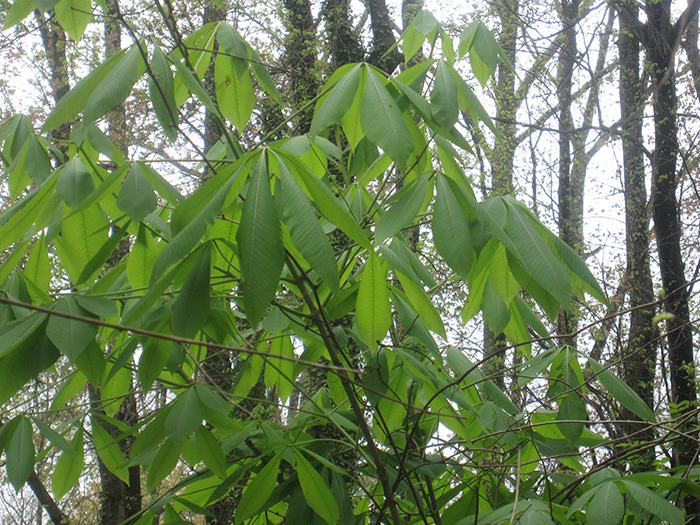 |
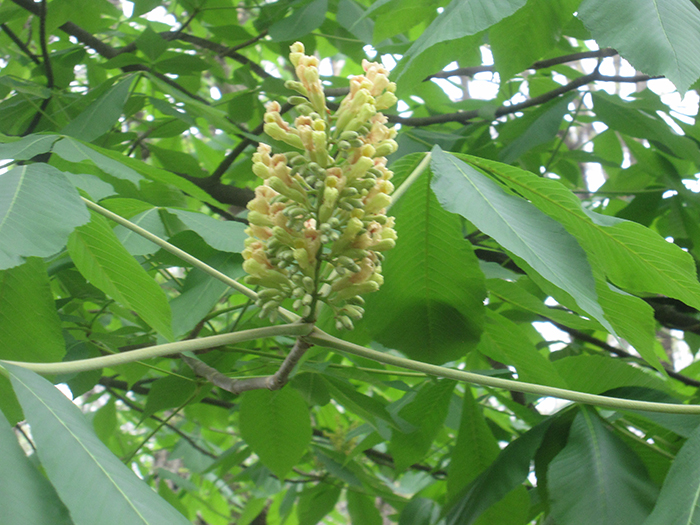 |
| In arrowwood (Viburnum dentatum) plants, “everything comes in twos,” he told the group, the leaves and branches are opposite. The leaves are “toothy.” |
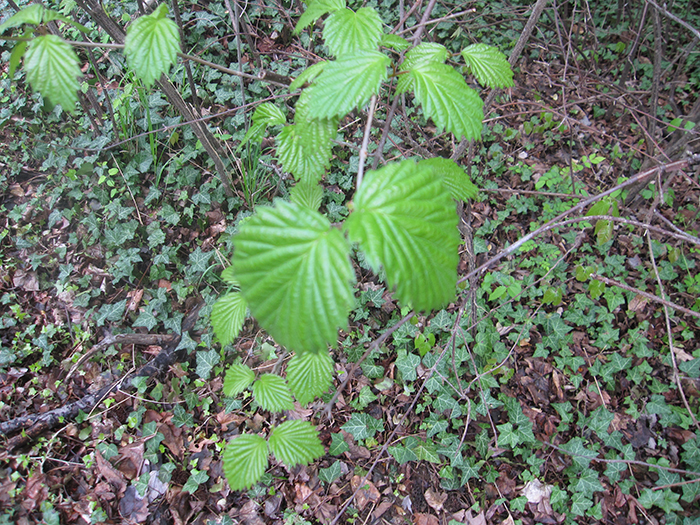 |
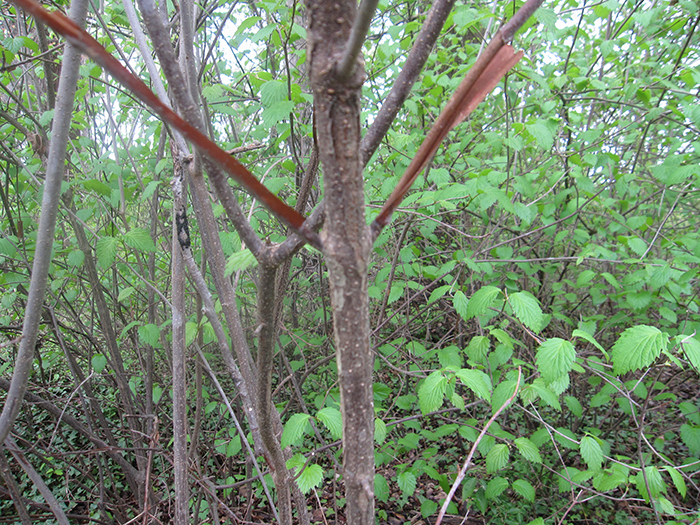 |
| The bark of green ash trees (Fraxinus pennsylvanica) has diamond shapes. |
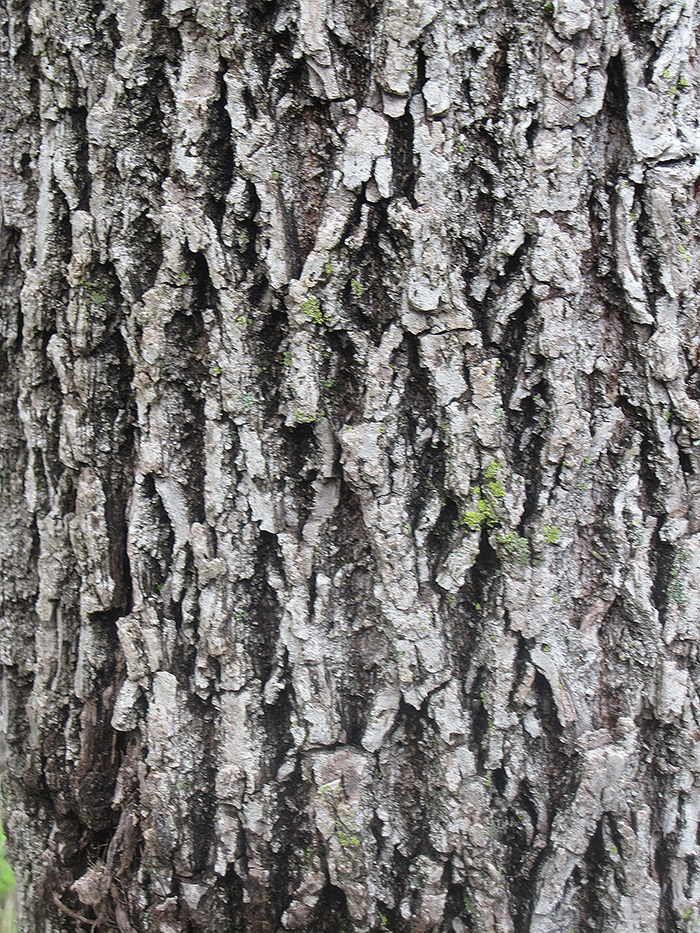 |
| This London plane tree (Platanus hispanica), like its “cousin,” the sycamore (Platanus occidentalis) has exfoliating bark. |
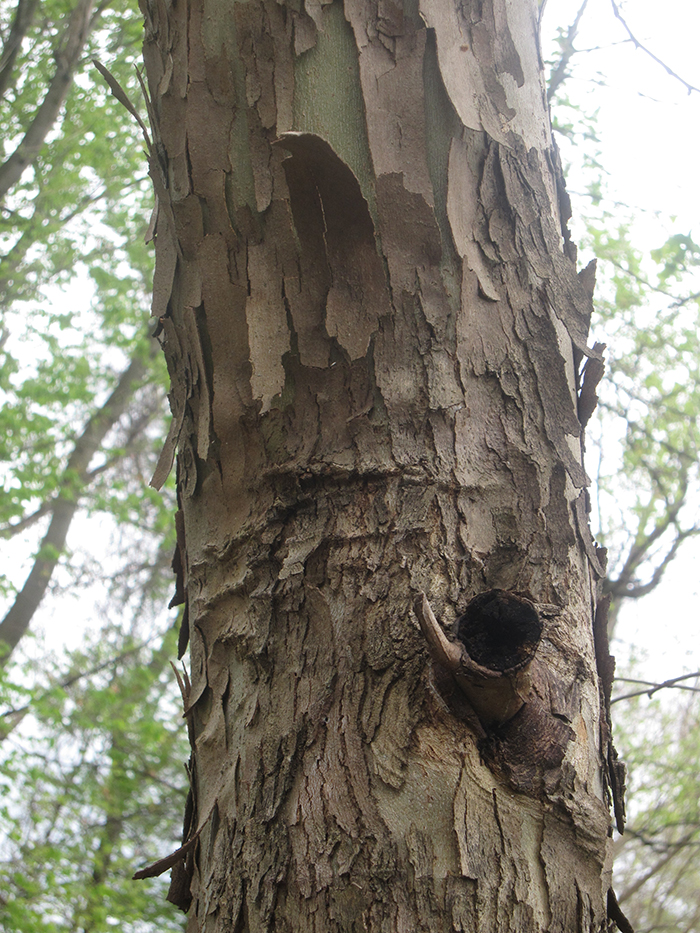 |
| Hackberry trees (Celtis occidentalis) have distinctive “warty bark.” |
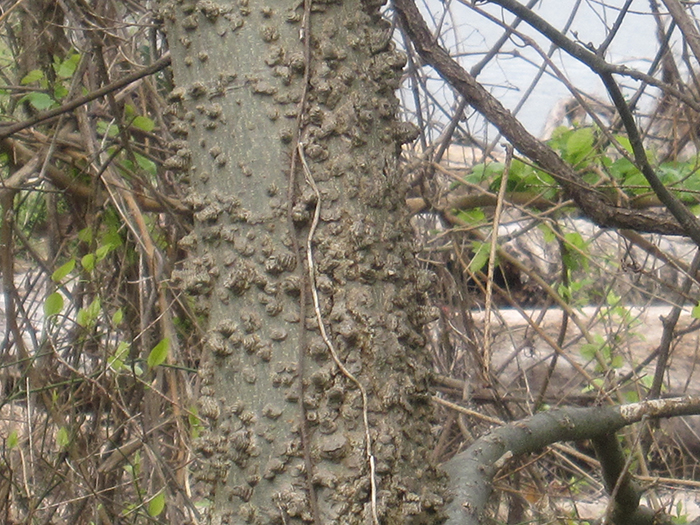 |
| It was a gray, cloudy day, but the group had a two-hour tutorial on trees. |
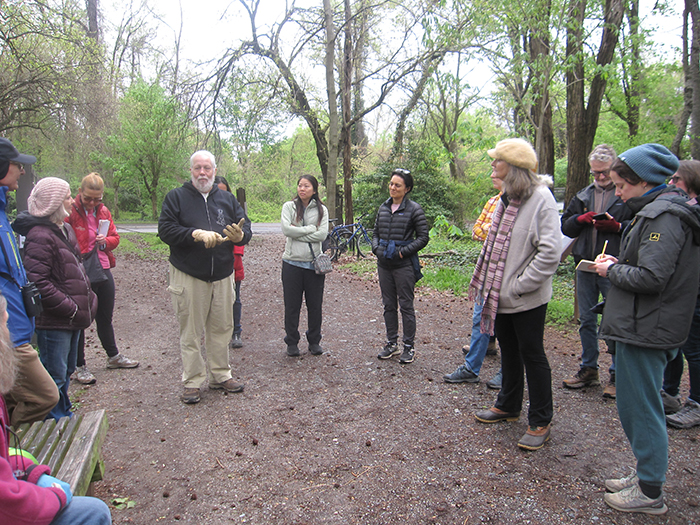 |

 Friends of Dyke Marsh, Inc. is a non-profit 501(c)(3) organization.
Friends of Dyke Marsh, Inc. is a non-profit 501(c)(3) organization.